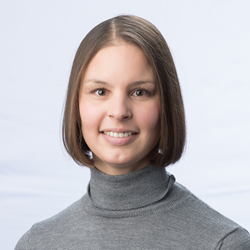Last Saturday, the first buses with affected holidaymakers from northern Italy arrived in the Netherlands. And the repatriation of damaged cars, campers and caravans by the huge hailstones has also started. What happens behind the scenes at emergency centres and insurers to help people? We ask Violette Hasselmeijer, operational director at SOS International.
How have you experienced the past week?
"It was busy. But of course we were also created to help with calamities abroad. So after the first bubbles came in from northern Italy, we isolated the damage reports by setting up an emergency team. That team was given a call script to gather as much information as possible. For example, at which campsite a victim stayed. Whether the car or camper could still drive. And whether there was a need for transportation home. That gave us insight into the extent of the calamity."
You have been working at CED for a number of years, of which SOS International is a part. Is this hailstorm an exceptional event?
"Yes, because hailstones the size of tennis balls we don't have every year. And not every two or three years. Of course, it is also high season and that means that many Dutch people spend their holidays in and around Lake Garda."
"When the number of damage reports increased and it turned out that people could no longer return home, the idea arose to use buses. At the same time, we consulted with the other emergency centres Eurocross, ANWB, Allianz Global Assistance and VHD about how we could work together. Because if we all had to arrange replacement transport separately, that would lead to a possible over-demand of rental companies. And it's not efficient either. That is why it was decided to arrange the transport of victims together. And because we were already working on the use of buses, we took on the coordinating role."
SOS International owns the red phone this year. This means that you have the coordinating role when the Protocol Coordination Calamity Dutch Emergency Centres comes into force. Is that protocol now also activated?
"No, the protocol has not come into force now. That is because it is only intended for medical emergencies involving more than 8 Dutch people. For example, in a bus accident in which Dutch people died or were injured. It is therefore a coincidence that we have taken on the coordinating role for bus transport from northern Italy back to the Netherlands. As far as the repatriation of the damaged vehicles of insured persons is concerned, the emergency centres arrange this individually."
And do you also handle the damage reports of insured persons?
"Nope. Emergency centres are the first point of contact for insured persons in the event of an emergency abroad. So think of us as an extension of an insurance company. We register the claim and can look in the policy conditions to see what is and is not insured. We may also give permission for, for example, repatriation of a vehicle or for arranging replacement transport. We advance the costs and arrange this behind the scenes with the insurer."
When will an insurer take over from you?
"That can vary per file. But simply put, the emergency call centre picks up everything that happens abroad. And what then has to be arranged in the Netherlands goes through the insurer. The assistance therefore starts at the emergency centre and ends at the insurer. For example, if a damaged vehicle is back in the Netherlands, the insurer's claims handler or loss adjuster comes into the picture for further processing."
How many damage reports have you received?
"After the hailstorms in Italy, SOS International received hundreds of damage reports. About 40 percent of the damaged vehicles can no longer be on the road and are repatriated as soon as possible."

Hasselmeijer looks back on the past few days with satisfaction. The emergency centres acted quickly and picked up bus transport efficiently after consultation. Of course, there are always things that can be improved. For example, she is thinking of better agreements on coordination. Not only as agreed in the protocol in case of medical emergencies, but also when it comes to mobility emergencies. It prevents parties from having to put their heads together at the moment about who does what. Hasselmeijer therefore advocates that parties from the entire chain be involved in the customer journey of insured persons in the event of a major calamity.
Was this article useful?

